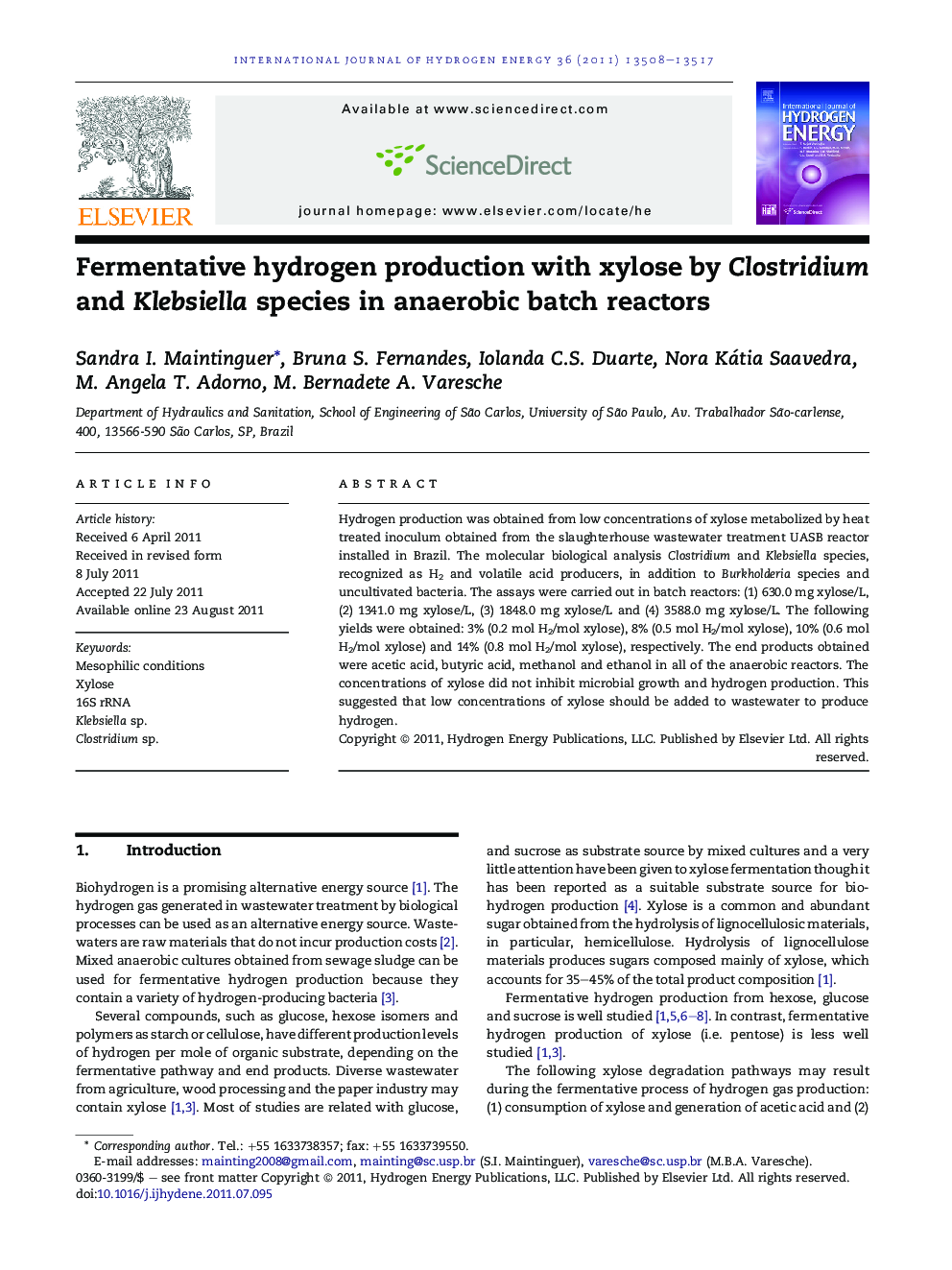| کد مقاله | کد نشریه | سال انتشار | مقاله انگلیسی | نسخه تمام متن |
|---|---|---|---|---|
| 1278693 | 1497572 | 2011 | 10 صفحه PDF | دانلود رایگان |

Hydrogen production was obtained from low concentrations of xylose metabolized by heat treated inoculum obtained from the slaughterhouse wastewater treatment UASB reactor installed in Brazil. The molecular biological analysis Clostridium and Klebsiella species, recognized as H2 and volatile acid producers, in addition to Burkholderia species and uncultivated bacteria. The assays were carried out in batch reactors: (1) 630.0 mg xylose/L, (2) 1341.0 mg xylose/L, (3) 1848.0 mg xylose/L and (4) 3588.0 mg xylose/L. The following yields were obtained: 3% (0.2 mol H2/mol xylose), 8% (0.5 mol H2/mol xylose), 10% (0.6 mol H2/mol xylose) and 14% (0.8 mol H2/mol xylose), respectively. The end products obtained were acetic acid, butyric acid, methanol and ethanol in all of the anaerobic reactors. The concentrations of xylose did not inhibit microbial growth and hydrogen production. This suggested that low concentrations of xylose should be added to wastewater to produce hydrogen.
► Generation of hydrogen from reduced concentrations of xylose.
► This study allowed for testing wastewater containing xylose to hydrogen generation.
► Use the inoculum from tropical countries such as Brazil.
► Use of wastewater contain xylose in small concentrations.
Journal: International Journal of Hydrogen Energy - Volume 36, Issue 21, October 2011, Pages 13508–13517